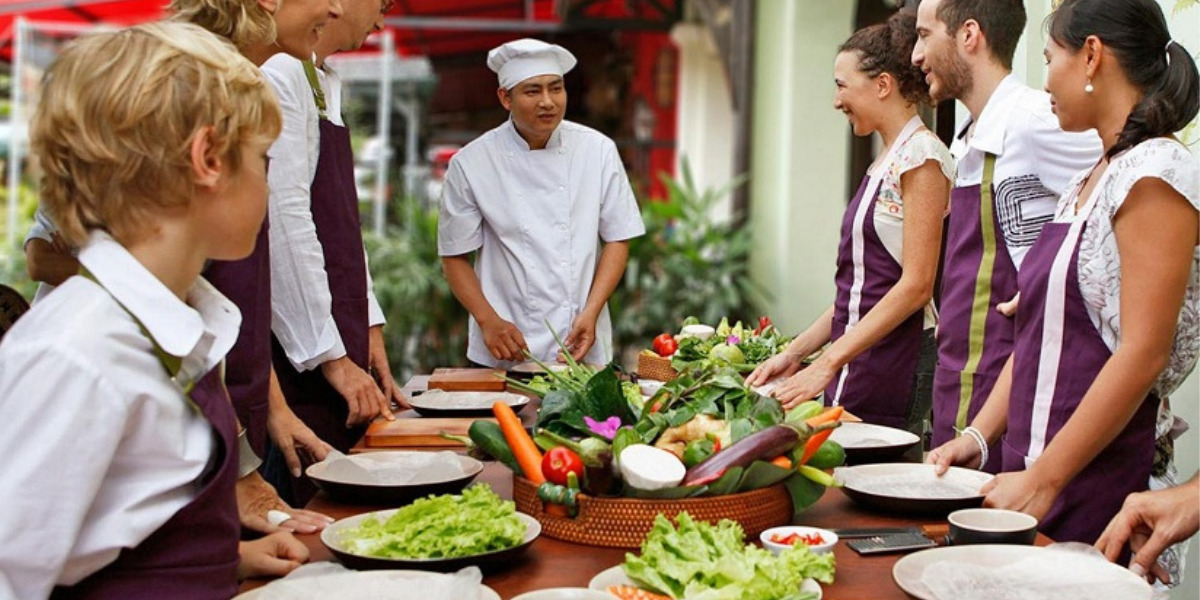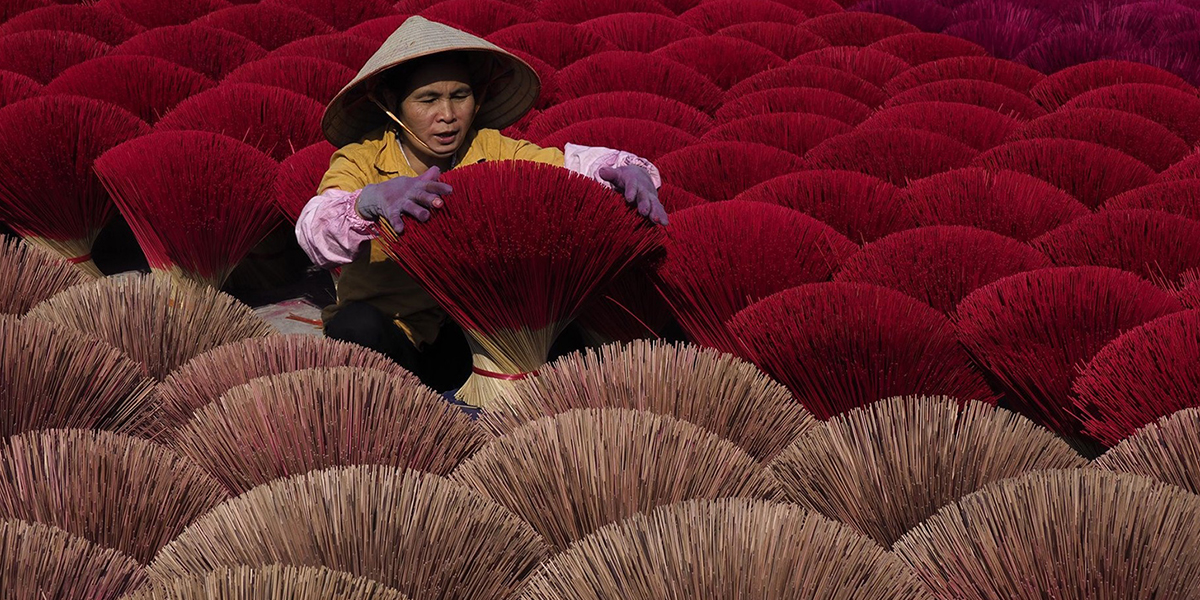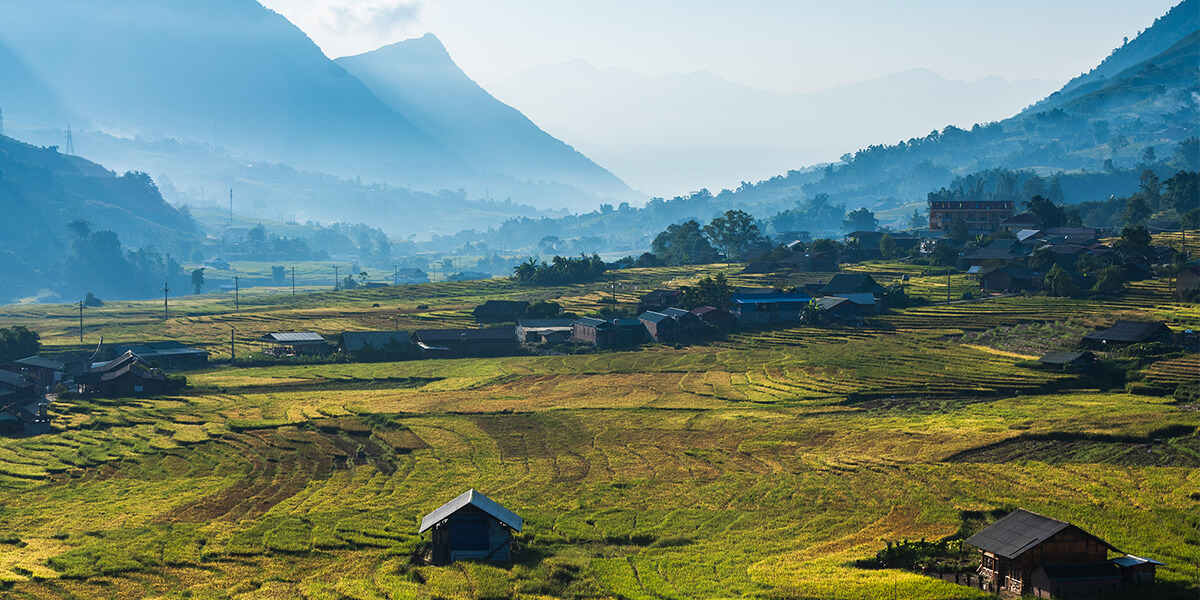https://localtravelidea.comAccording to the Vietnamese concept, death is not an end but they just move to another world, reunite with their ancestors, and then there will come a time for the living to meet those who have passed away. Though having similar meanings, funerals in Vietnam are held differently among 54 ethnic groups, moreover, along with the development of society, the funeral now has many differences from the past.
Vietnamese funerals: Vietnamese death rituals

Source: hanhtrinhtamlinh.com
A funeral in Vietnam begins not only from the moment one dies, but also from the moment that person is weak and / or dying. The relatives would ask for the afterlife name and last wishes, which are called testaments, then use five-spice water (“ngu vi huong”) to clean the body and change clothes. If that person dies without saying anything prior, the above things will still happen, but the people around will wait for their relatives to return to look at the deceased one last time before holding a funeral.
According to Vietnamese funeral traditions, when the person is out of breath, a chopstick is placed across the jaw to prevent teeth from grinding together and some rice, and three coins (or gold) are put in so that the dead person does not turn into a hungry ghost. Science also has a number of explanations for these actions such as absorbing moisture, and preventing the body from rotting (decomposing) too quickly as the Vietnamese funerals last for days. Family members will set up an altar right at their home and continue with the next steps of the funeral.
“Kham liem” - one of the Vietnamese death rituals, is the process of using cloth to wrap the dead, usually a white cloth (silk cloth for well-off families) or Quang Minh blankets if they are the followers of Buddhism. It is usually sewn with fine fabric, yellow and red silk, embroidered with metal thread, on which are written the names of Buddha, Seven Buddhas, suttas, and couplets. After Cloth Wrapping, relatives stand around and use canvas at the four corners to lift the dead person, placing them in the coffin - Body Placing stage.
Although more and more people now cremate their deceased, most people still choose the traditional method of burial, especially in cemeteries for more convenience and solemnity. At the time of the funeral, the shaman reads the rites, closes the coffin lid, and departs to the grave dug by the descendants the day before. According to Vietnamese funeral customs, if it is permanent, the grave will be built firmly, but if it is reburial, the grave is only lightly covered with earth and grass. When the Vietnamese funerals are over at the grave, everyone will carry the photo and perform the ceremony to go home, but by another way and also stop crying, so that the spirit of the dead person won’t follow.
The photo, incense bowl and altar tray are brought back and placed on the altar, which must always be incense and smoke during the mourning period. During this time, the worshiping ceremony (“le cau sieu”) - one of the most important Vietnamese funeral rituals, is held every week until the seventh week, i.e. 49 days, then 100 days, 1 year, and 3 years is the official end of the funeral. Depending on the position of each person in the family, their mourning time for the deceased is different, representing a long-standing civilization with hierarchical order and strict rules. The great mourning time for a funeral in Vietnam is 3 years, but in reality only lasts 27 months, while there are many types of small mourning periods, ranging from 3 months to a year. For the convenience of work and for daily life, nowadays mourning clothes are only worn until the burial is completed, after that, a black bandage on the sleeve or a small black piece on the chest is acceptable.
Vietnamese funeral attire

Source: vanhoagiaoduc.vn
Vietnamese funerals are one of the important events of the family, not only showing traditional customs and rituals but also for family members to express their regret and condolences. Therefore, Vietnamese funeral clothes are also focused on, appropriately selected to show respect and remembrance for the deceased, and at the same time clearly distinguish roles and relationships between family members.
For blood relatives in the family
The children of the deceased will use the most special clothes, often called “tham troi”, which are wide and knee-length shirts, sewn of coarse fabric but not carefully sewn, leaving with rather ugly natural fibers, loose sleeves. The son must also wear a straw hat wrapped with banana sheath and hold a cane (a round bamboo one if the father dies, a square cane made of Folium Erythrinae if the mother dies). According to Vietnamese funeral customs, the daughter or / and daughter-in-law of the dead person needs to wear a banana braided belt, let their hair down and not wear sandals.
Meanwhile, the grandson of the deceased wears a hat and white robe; son-in-law and brothers wear white long shirts, and sisters use twisted white fabric to tie her hair. Distant relatives only have to wear a Vietnamese funeral white headband, except the grandchildren might have different colors depending on their generations.
Vietnamese funeral attire for those who come to the funeral
Friends and neighbors do not need to dress like family members of the deceased, but you should choose elegant and simple outfits (black, white colors) to show respect. You should choose dark clothes such as a black shirt and black pants - the safest and most appropriate choice.
Vietnamese funeral headband

Vietnamese funerals’ headband - Source: nhacaitotnhat.com
Wearing a mourning headband is not only to show affection and respect, but it is also used to distinguish the relationship between the deceased and the wearers, who may not be very familiar. Because the Vietnamese often attach great importance to their roles, it will help visitors not have to ask more questions, especially on the day of the funeral when the family is sure to be grieving and busy.
Family members usually have to wear Vietnamese funeral white headbands, but the style will vary slightly between biological children, in-laws, siblings, grandchildren and great-grandchildren. In some places, grandsons and granddaughters will use white headbands with red dots, while grandchildren have blue dots on theirs. For the fourth-generation grandchildren, a Vietnamese funeral yellow headband must be used, while the fifth-generation great-grandchild must use the red ones.
Flowers in Vietnamese funerals

Source: tanglehanoi.net
One of the most common things to see when visiting funerals in Vietnam is the wreath of flowers, with the sender's name on it and their goodbyes to the deceased. These wreaths are not required but are often sent by many visitors, showing compassion, respect and sympathy for the family. Vietnamese funeral flowers can be fake or real, most commonly a combination of the two, arranged in full circles, topped with a ribbon on which the sender’s condolences are written. Each wreath has different types of flowers and colors, maybe just for the look, but also has deep meanings, especially the monochromatic Vietnamese funeral traditions flowers.
White mourning wreaths often use chrysanthemums, roses, lilies,... to express the purity, modesty, and sophistication of the deceased in the eyes of the sender, as well as their mourning. Purple wreaths, often using orchids, are also chosen by many people when they want to show pride, respect, and admiration for the contributions and achievements of the deceased. In addition, the yellow color of chrysanthemums, gerberas, is also used to mean wishing the best to the spirits, so they can go to the afterlife safely and peacefully.
Music in Vietnamese funerals

Source: wikipedia.org
A Vietnamese funeral tradition that cannot be missed is the Filial Music played by Ceremony Band, which used to be called 8 Sound Band for using various musical instruments to represent 8 tones. The Musical Ceremonies carry profound meaning in a funeral in Vietnam, helping the family express their boundless love and compassion while sending off the deceased to eternity in peace. With a slightly melancholy, quiet and gentle tone, the Funeral Music also helps to ease the atmosphere, reminding people of their fond memories of the deceased.
Each region, each ethnic group will have different customs and habits, so the music used in a Vietnam funeral will also vary, bringing different atmospheres of the funerals. It’s often sadder for families in the North because of the harmony of drums, trumpets and cries, while the atmosphere of the funeral in the South is softer with lyrical songs.
Vietnamese funeral music according to Northern customs
In accordance with traditional funeral rites, Filial Music in the North must express all 8 tones, using all kinds of musical instruments such as trumpet, flute, drum, lute, etc. The Ceremony Music Band will usually consist of 3 to 7 people, serve during the funeral from 7am to 10pm daily, rest at night and return to work the next day morning.
Music in Vietnamese funerals in accordance to Southern customs
The Ceremony Band in the South is working 24 hours a day and sleeps at the family home, using musical instruments usually including trumpets, electric guitars, organs, etc. The Western trumpet band is also mainly used in the South, usually playing at Cloth Wrapping and Body Placing stages, and when moving the coffin to its final resting place, but the family can request the music to be played whenever.
Some Vietnamese funeral superstitions
Duplicate funerals
The duplicate funeral is a phenomenon where a family member dies on the same day, or still in the mourning time of the person who previously died, especially in the period after 3 days or 49 days of burial. This phenomenon of people dying close to each other is considered bad luck, bringing more deaths to the family, although how serious it also depends on the date and time of the last breath. Many people worry about this and invite monks, priests and shamans everywhere to perform rituals to dispel bad omens, there are even cases where family members refuse to bury the deceased for fear of duplicate funerals.
Hang the corpse on a rack
Meanwhile, the H'mong ethnic people in Ho Mit Commune, Tan Uyen District, Lai Chau Province also have a depraved Vietnamese funeral custom that needed to be changed. When someone dies, the family will invite a shaman to perform a ceremony and hang the corpse on a rack, and organize a feast at home until the body is taken to the cemetery, where they continue the ceremony.
In a funeral of the Hmong people here, the dead will often be left hanging for 3 - 7 days, outside under the sun for 1 - 2 days, depending on what day the fortune-teller says they will be buried. As other superstitions in Vietnamese funerals, this is not suitable for a civilized lifestyle, is economically costly, affects environmental sanitation, and spreads diseases. Therefore, since 2015, the local government has carried out many educational activities to help the Mong people here change in accordance with new cultural lifestyles and fine customs of the nation.
Vietnamese funeral superstitions: Do-tom-ami
Another depraved custom of Vietnamese funeral is “do-tom-ami” - burying babies alive with their deceased mothers, often in hidden villages in the Central Highlands and some central provinces. Many elderly people revealed that not only are babies buried alive with their mothers, who unfortunately died during childbirth, but babies who are still breastfed also cannot escape the death.
The reason for this very cruel custom is explained in a very simple way, which is because life in the deep mountains in the past was inherently poor and harsh. Ethnic people believe that when the children are not breastfed, they will eventually die, so “do-tom-ami” will help bring the child back to the mother, receiving better care. In modern times, thanks to the education of the government, this custom has disappeared, but its horror remains forever in the hearts of people living in that period.
Except from the depraved customs, funerals in Vietnam are a long-standing and unique culture that brings many human values to the local people. Vietnamese funerals both shows love and mourning for the deceased, and helps the living move on with their lives. Hopefully, the above information has helped you better understand the Vietnamese funeral traditions.







.jpg) — Ha Bich
— Ha Bich




































